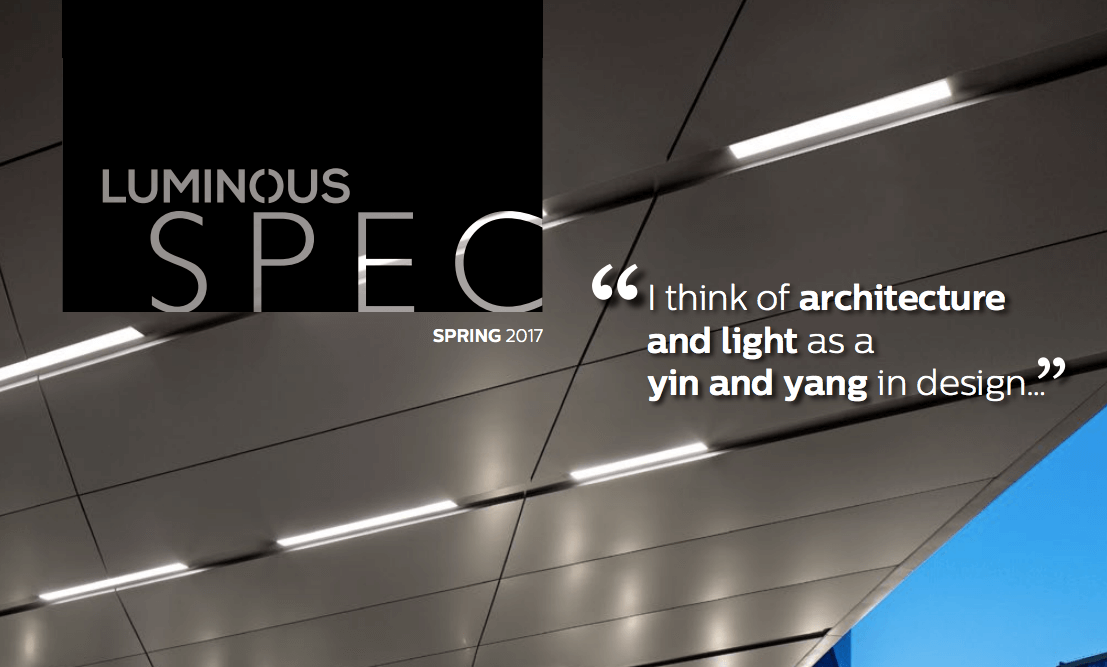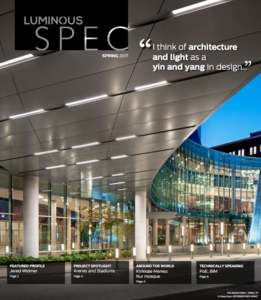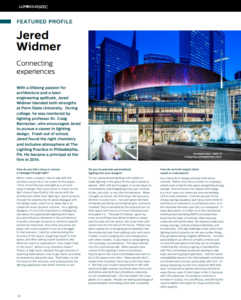From his lifelong passion and student mentorship to his philosophy on lighting design, the work and professional approach of TLP Principal Jered Widmer is featured in the Spring 2017 edition of Luminous Spec.
When it comes to using light to tell a story or convey the right message, Jered explains that it’s all about working closely with the architect to get on the same page in terms of vision. “I think of architecture and light as a yin and yang in design,” he told writers for the magazine. “They work hand-in-hand, so the light should have fluidity that works with the architecture rather than fighting it.”
Jered discusses the importance of controllable lighting and how advancements in technology are allowing people to acutely personalize their lighting in both commercial and home environments. Jered also provides insight into the nuances of LED lighting and where the understanding between lighting designers and manufacturers must converge.
Because not all LED products are created the same, education is key for the design team. “Part of the service we provide is helping the entire team understand why we select a fixture,” Jered said. “We don’t just pick one and say it’s the best one out there. There’s logic involved.”
TLP thanks the staff at Luminous Spec for a great interview and featured profile in this issue.
Featured Profile: Jered Widmer
Luminous Spec | Spring 2017
With a lifelong passion for architecture and a keen engineering aptitude, Jered Widmer blended both strengths at Penn State University. During college, he was mentored by lighting professor Dr. Craig Bernecker, who encouraged Jered to pursue a career in lighting design. Fresh out of school, Jered found the right chemistry and inclusive atmosphere at The Lighting Practice in Philadelphia, PA. He became a principal at the firm in 2014.
How do you tell a story or convey a message through light?
When I start a project, I like to talk with the architect about his or her vision for the space. I think of architecture and light as a yin and yang in design; they work hand-in-hand, so the light should have fluidity that works with the architecture rather than fighting it. Some projects include the opportunity for great dialogue with the design team, and time to really dig in to create the most dynamic solution. As a lighting designer, it’s not only important to intelligently talk about the appropriate lighting technique, but also influence elements in the architecture to build a stronger storyline or reinforce specific emotional responses. And while storylines are great, with some projects it can be a struggle. In that scenario, I start by understanding the function of the space, imagining myself in that space, and then asking myself questions like: What do I want to experience? How might I feel in this room? Where is my attention drawn? There’s a high-level, abstract thought process of outlining destinations, how to get there, and what to experience along the way. That helps me set the tone for the storyline, and subsequently the lighting application and which fixtures to use.
Read the full interview in the Spring 2017 edition of Luminous Spec.





